How to know when to change a bike tire
If you are here, then you must be asking yourselves how to know when to change a bike’s tire?
I’ll tell you about this below.
But first, let me say that the tires are the main point of contact between the bike and the ground. They have a great impact on our performance on the pedals:
- Good tires = Better Performance
- Bad Tires = Bad Performance.
That’s why professional cyclers change their tires after each race. And that’s why professionals buy the best mountain bikes which are affordable too. What they also look for is the best storage systems and some of the good car bike racks to secure the prized MTBs.
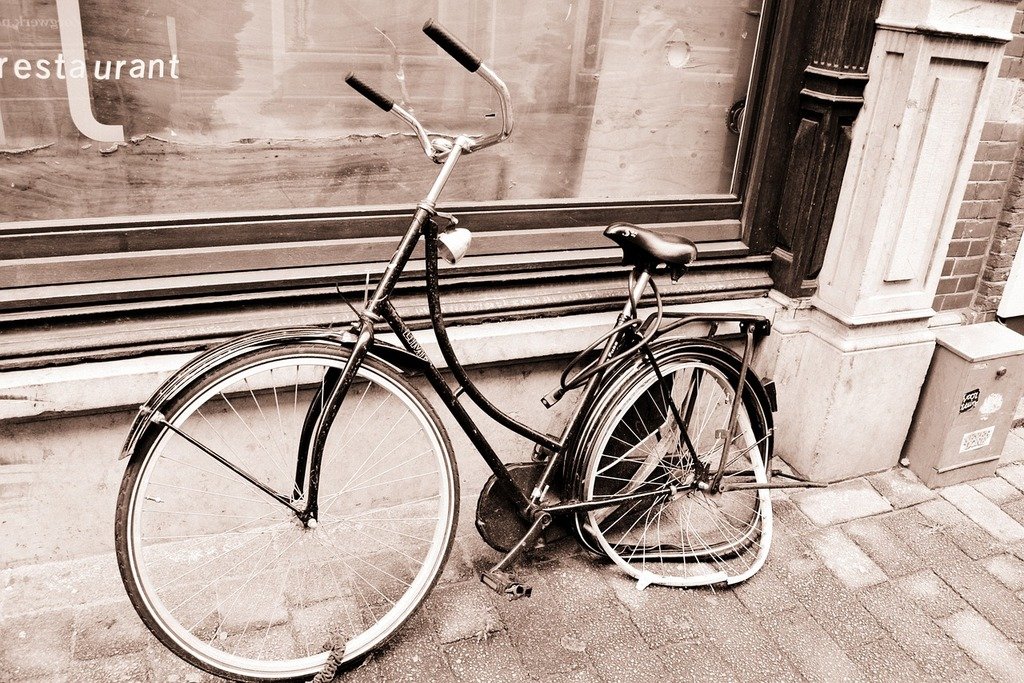
Tires are one of the consumables that suffer the most wear and tear whether you look at bikes, motorbikes, cars, trucks, buses or any other form of wheel type transport.
That’s why, as the kilometers accumulate, it will be of utmost importance to be aware of their wear and tear and to know the signs that tell us it’s time to replace them.
It is worth clarifying that throughout this text the terms “tire” and “cover” refer to the rubber toroidal part that may either have an inner tube or tubeless and is mounted on the rim of a bicycle.
How long does a bicycle tire last?
This is a pretty good question. Answering it would provide the answer to when you’d have to change any road bike tires or when to change your mountain bike tires.
What you need to know is that several factors directly influence tires’ lifespan. As an example, a bad rim will contribute to this.
What I want you to know is that the level of wear can vary considerably depending on factors such as the quality of the materials, characteristics of the specific model, frequency of use, conditions under which you ride and even the weather.
Although some brands offer tires that promise to last around 10,000 km, in practice you’ll likely have to replace them as you approach between 3,200 km or 3,500 km.
As mentioned above, depending on the use and conditions under which you use them, you may even need to change your tires more than once in a year.
Note that no matter what you do, bicycle tires wear out after a few thousand kilometers. And for safety purposes, I advise you to change your tires to avoid bad surprises.
What are the different parts of a bicycle tire
Here are the different parts of a tire that you need to know about.
- Bearing surface: also known as a drawing, it is the part that has contact with the ground. It is made up of a series of patterns with slots and/or blocks according to the type of use the tire is designed for. There are drawings for snow, wet and dry terrain, but also for mountain bikes and other specializes surfaces such as indoor, outdoor, etc.
- Sidewalls: These are the side walls that form the tire. Usually, you’ll find information such as the size and pressure at which you should inflate the tire on the side walls. You’ll also find the radial circumference of the tire and other information.
- Anti-puncture tread: This is an additional strip of synthetic material: kevlar, nylon, etc.between the tread surface and the casing. Certain types of tires include this band to reduce the possibility of punctures.
- Casing: The main structure that forms the tire and is made of layers of threads that may be cotton, nylon or other materials.
- Bead: The circular part, usually with a steel or Kevlar core that holds the tire to the rim.
The 7 signs that your bike needs new tires
There are many different characteristics that you need to investigate to tell if your tire needs replacing. I list 7 of these for you. You just need to use common sense and your eyes for visual inspecting your tires.
1. The drawing on the tires’ outer side is worn
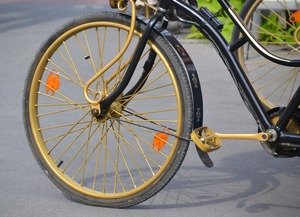
The drawing patterns that make the outer shell of the tire will wear out through time. This signal is easy to detect as it is highly visible. Wear of grooves and/or studs in the tread pattern is a good indicator that it is ready for replacement.
On any road bike tires or tires with smooth tread patterns, you can identify wear by looking at it from the front. If the tire has a flat section at the top of the bearing surface, it is time to replace the tires on your bike.
Do not wait to replace the tire in the case. Any small object on the road could lead to a puncture and you do not want to face this while you are enjoying yourselves.
2. The tire rubber is cracked and dry

This deterioration occurs most often when the bike has not been used for long periods.
Many people think that this cannot happen if the bike is stored indoors. Well, that’s a misconception. When indoor, the rubber can dry and then crack. It is only a matter of time.
On the contrary, if the bike is left outdoors, the elements can accelerate wear. The rubber becomes brittle over time (quickly), and the more temperature swing (hot to cold and vice versa) as well as with changes in the weather direct sunlight and a lot of rain will lead to cracks on the rubber.
If cracks appear (often starting on the sides) it is recommended that you replace the tires with new ones as these will have a greater chance of failure.
Note that if you leave your bike outside, you’ll face other problems such as rust, etc.
3. The cover is punctured

These tires punctures are usually caused by road debris such as glass, small wires, and other sharp debris. These types of materials often accumulate on the sides of roads and special care must be taken in the rainy season.
Cracks may appear on your tire as a result of potential tiny little punctures caused by some random embedded materials. These can be the result of a blow with a sharp surface. In the city, it can be the result of falling into a pothole. In the mountain, it can be the result of an impact with a sharp stone.
If the damage is apparent, and especially if you notice that the tire housing has been compromised, it is worth replacing the tire. Even if you use tubeless tires, and when this type of damage occurs, it best to replace the tubeless. The idea is that even the best sealant is in most cases not enough.
4. The rim casing is already visible
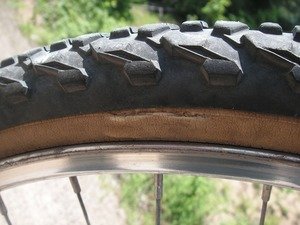
An exposed housing is very obvious, as the threads that make it up will be visible. Although this usually happens on the side of the rim, if you allow the bearing surface to wear excessively, the casing will also be exposed in this area.
If you continue to use a tire with this wear, you will probably get a puncture quickly, because of the thin section of the casing that was not designed to make contact with the road. By having it exposed, will make it easier to get a puncture and even make the tire come off, exposing it to bursts that will be impossible to repair.
5. The rim is deformed
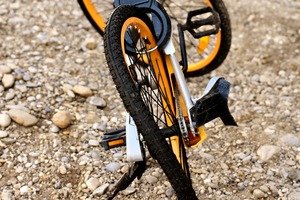
This is usually noticeable when it happens in the area of the bearing surface. But you usually can feel it while cycling.
This is especially true when you are pedaling, as you may feel a slight bump or jump that is not normal. Usually, rim deformations are the result of an impact, but at times it can be a manufacturing defect (this is very rare though).
These types of deformations indicate that the structure of the tire has been compromised. It will, therefore, become a weak point. Even if your tire is not leaking and still seems to be working, it is advisable to change it.
But you also need to change the rim at the same time before any accident happens.
6. The tire bead is damaged
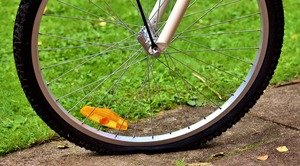
It is important to be aware of these types of wear. Although it is not very common in tires with good material, it may occur in tires that have already exhausted their useful life.
You can also find these on tires have suffered a cut with some sharp element (a sharp stone, for instance).
In extreme cases, even the bead core may be completely exposed.
When this type of wear occurs, do not wait too long to change the tire. Remember that the bead is the part that keeps the rim attached to the rim.
So if you don’t want that rim to come off its logarithm, just at the moment you least expect it, you have to be careful to change the tire when it presents some alteration in the bead.
7. You get punctures more often

Frequent punctures are certainly a warning that tires need to be replaced.
This happens because the tread has lost thickness and is thin enough that it cannot protect the chamber from sharp objects and you constantly get punctures.
I think I do not need to expand on this. I am sure you got the point.
Final word
Now that you have become familiar with these signs, you will be able to determine when to change them. As you accumulate miles, you will be amazed at how quickly your bike’s tires wear out or fail – this is normal.
You’ve probably noticed that the rear tire wears about twice as fast as the front. And the experience or science behind the bike, which knows something about physics, weight and other things, says that you’ll want your front tire to show less wear to ensure a better ride. So often, riders rotate the front tire back and replace the front tire with a new one.
However, when you are forced to change your tires, be sure to recycle your old tires and tubes, as well as know the specific tire size for your rim, as well as all the specifications needed to ensure a long life for those new tires.
